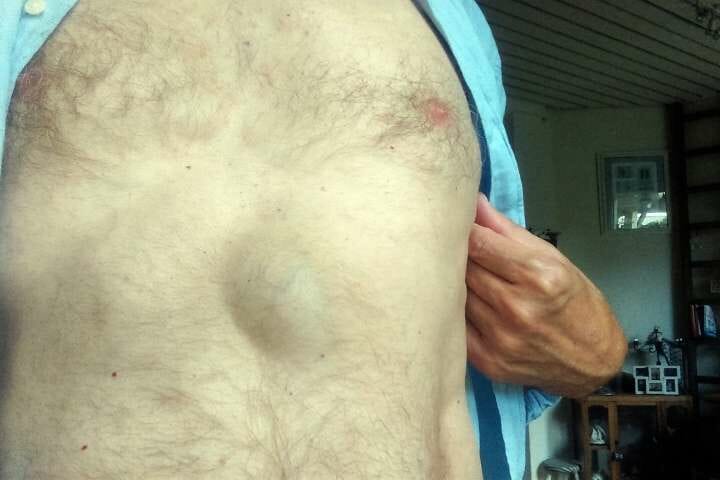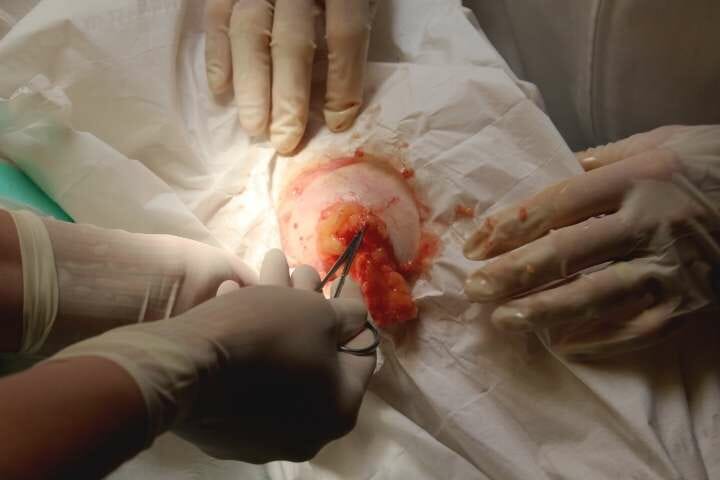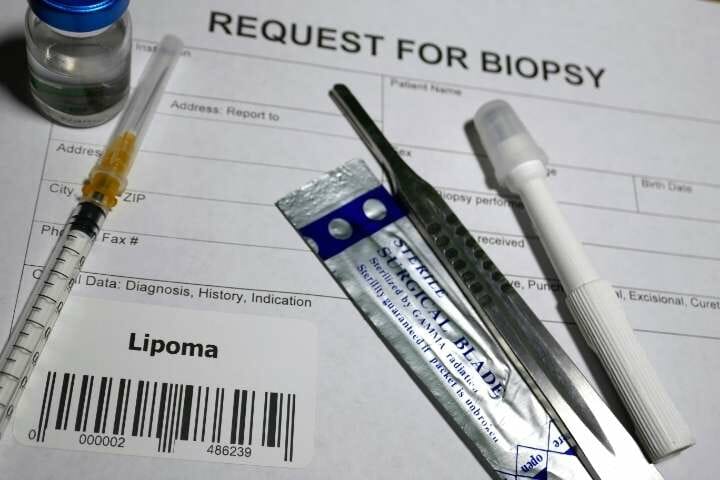Is lipoma removal surgery covered by health insurance?
One of the questions we have received about Lipoma. We understand why so many people are asking about this.
If you have a lipoma you may be a little conflicted about whether you should seek medical care for it as it may not be something covered by your insurance.

Lipoma removals are, typically, classified as plastic or cosmetic surgery and many insurance companies do not cover plastic surgeries because they are considered elective, and are not necessary or emergent.
However, there are some exceptions – even within plastic surgery – where the surgeries are covered and, thankfully, lipomas can be one of these such exceptions.
What Is A Lipoma?
This condition consists of fatty lumps that develop in the layer between the muscle and the skin. The lumps will develop slowly overtime, so it may not be noticeable right away that you have one.
In the majority of patient cases, these lumps are benign tumors and are completely harmless to their overall health. However, other factors like size and location of the lumps can make having them incredibly uncomfortable for people – sometimes even causing a great amount of pain and discomfort.
Most patients will want to have them removed – even just for cosmetic reasons if they are not causing them any kind of pain.
You might like to read: Is Cyst Removal Covered By Insurance ?
Why Get A Lipoma Removed?
Most lipomas are harmless, but people get them removed because of cosmetic and comfort reasons.
Additionally, lipomas are almost always symptomatic so it makes it much easier to get the removal covered under your insurance. So the good news here is that even though this condition is generally harmless to your health, you can still get the lipoma removal surgery covered by your insurance company, as most insurance carriers do.
So, Does My Insurance Cover Lipoma Removal?
If you have private benefits (like through your employer) you may have additional coverage on top of your state insurance that helps to cover the costs of this removal procedure.

Many states will offer this procedure to be covered because they can become quite painful and considered a medical necessity – depending on location – and allowing a person to live in pain and discomfort all the time is not great.
The types of coverage will vary from state to state and individual employers, but if you have questions about what you qualify for it’s important to reach out and make sure you understand what you are covered for before booking a surgery.
For those people who have Medicare or Medicaid, they may have additional coverage options for this procedure to be done.
You might like to read: Your Quick Guide To Long Term Care Insurance
Medicare And Lipoma Removal
For those who have a lipoma and are on a Medicare plan they may be wondering if this treatment is covered by the Medicare program.
Lipoma removal surgery that is covered by Medicare is typically approved on an outpatient basis. While Lipoma removal surgery for medical reasons is typically covered by insurance carriers, cosmetic lipoma removal surgery is not, but each insurance policies vary greatly.
Lipomas generally do not cause medical problems or are not harmful to a person’s overall health, and do not pose any long-term health risks. Knowing that it can make it very difficult to get Medicare to pay for this procedure since it’s not essential.
When trying to get a lipoma removal covered by insurance, a physician must be able to say that having this lipoma is a risk or detriment to the person’s health or physical wellbeing. When it is a threat to a person’s health it becomes necessary to do a lipoma removal procedure, therefore health insurance will cover it.
If the procedure is deemed medically necessary, and must be done in a hospital then Medicare Part A would be covering it (as opposed to Medicare Part B where it would be treated as an outpatient procedure).
The lipoma removal surgery cost can vary depending on the insurance plan and the size and location of the lipoma. For those people who have been enrolled in Medicare Advantage Plans, they may be eligible for additional covered benefit when it comes to lipoma treatment. For your exact medical insurance coverage, you will need to contact your health insurance plan provider to determine what your exact Medicare coverage is.
Medications For Post-Removal And Medicare
The procedure to remove lipomas is done under local anesthesia, and patients can go home on the same day. When someone has a lipoma removed, there will likely be medications needed to help with pain and swelling. Medicare will most likely be able to help with those prescriptions, but if you have issues or questions about your coverage you will need to talk to Medicare to confirm what your coverage is.
You might like to read: Assisted Living Insurance Costs
Medicare And Testing For Lipomas
As mentioned, lipomas are generally quite harmless to the people who have them. However, there is another condition known as liposarcomas. These are similar lumps that grow between the skin and the layer of muscle, but they grow much faster than lipomas do and they are, in fact, cancerous.

In some cases, a doctor might be concerned about a lump being a liposarcoma and so they will order some tests to be done to ensure they know exactly what it is they are dealing with.
People who are on Medicare, when a doctor orders these tests, will have the costs covered. The costs would even be covered if the person doesn’t end up qualifying for lipoma removal afterwards.
What Is The Procedure For Removing A Lipoma?
For most people, this procedure will be done on an outpatient basis so there won’t be any hospital stays or major surgeries done. There will be some cases where the situation is complicated or it’s a very large lipoma and surgery is needed. A doctor or surgeon will be able to walk you through what will happen for your individual situation.
For those cases that are handled on an outpatient basis, the doctor will freeze or numb the area around the lipoma to make sure the patient doesn’t feel much discomfort.
From there, they will cut into the skin and remove the lipoma from the patient. They will close the wound with stitches (sutures) and that’s the end of the procedure. Most doctors will send the lipoma (or a portion of it) off to a pathology lab to ensure it is a benign tumor and not dangerous to the person’s health.
The doctor will also, likely, schedule a follow up appointment to check out the area and make sure it’s healing properly.
A doctor will also give instructions with what to expect (and not to expect) in the days and weeks following the procedure. They will also note any symptoms that warrant immediate medical attention (like a fever, nausea and even itching/skin irritation around the area).
You might like to read: C Section Scar Revision Covered By Insurance
Non-surgical Options To Remove A Lipoma
There is a very common plastic surgery procedure called injection lipolysis that helps to dissolve fat and give patients a much slimmer appearance.
It works by using chemicals to dissolve fat cells beneath the skin. Even though this procedure is almost always classified as cosmetic – and therefore not covered by insurance – it has been shown to be effective at melting fat cells when administered by a doctor.
So if you don’t want to have surgery or have a lipoma cut out of you then this procedure could be a great option for you to help melt the fatty deposit that is a lipoma.
Identifying A Lipoma
If you have a suspected lipoma, it’s important to be able to differentiate it from other conditions that it could be similar to. There are a few other conditions where the symptoms are similar to a lipoma but these conditions are much more serious and may need to be addressed by a medical professional immediately.

If you aren’t sure about what you have, and how serious the condition is, it’s important to make an appointment with your doctor. During the appointment they will examine the area of concern and look for specific symptoms to determine what it is you’re experiencing.
The doctor may also request some imaging or diagnostic testing to be done so they can be sure their diagnosis is correct.
After the doctor has been able to confirm that you have a lipoma, they will go ahead and discuss your options with you for having it removed. You don’t have to have it removed if you don’t want to but overtime they can become very uncomfortable and even painful, so you might want to consider having it done.
After the procedure, your doctor will likely send a sample away to the lab to have it tested just to be sure there isn’t any kind of harmful cells in the lipoma.
You might like to read: Worker’s Compensation Vs. Disability Insurance
Still Have Questions?
If you want to make sure that your lipoma removal is covered by insurance, the best thing you can do is call them. Ask your coverage benefits and other information if you need to do anything (like a predetermination) to get that coverage.
Having a lipoma removed can seem very overwhelming and scary, but it’s a small procedure that can make your life so much more comfortable. Talk to your doctor about if this is the right option for you and whether this is something you should consider.
You may have multiple lipomas that you want removed, and some doctors will be able to them all during one visit. This will be up to each individual doctor though, and you will have to talk to them before the procedure starts.
You are also not prone to having them happen again just because you’ve had one of them one time. You may get another one at some point, but it’s not a guarantee once you’ve had one.
